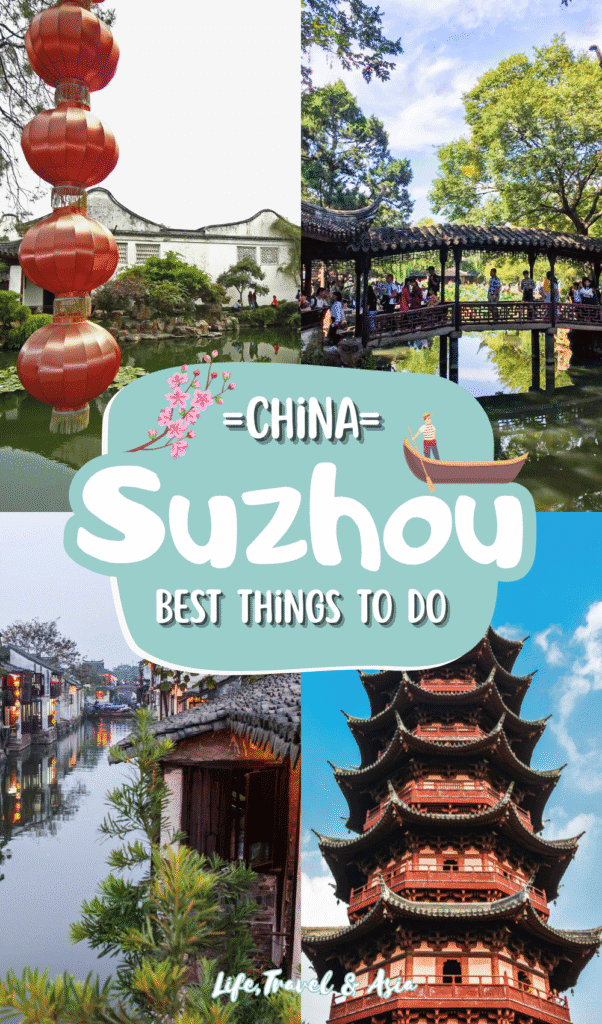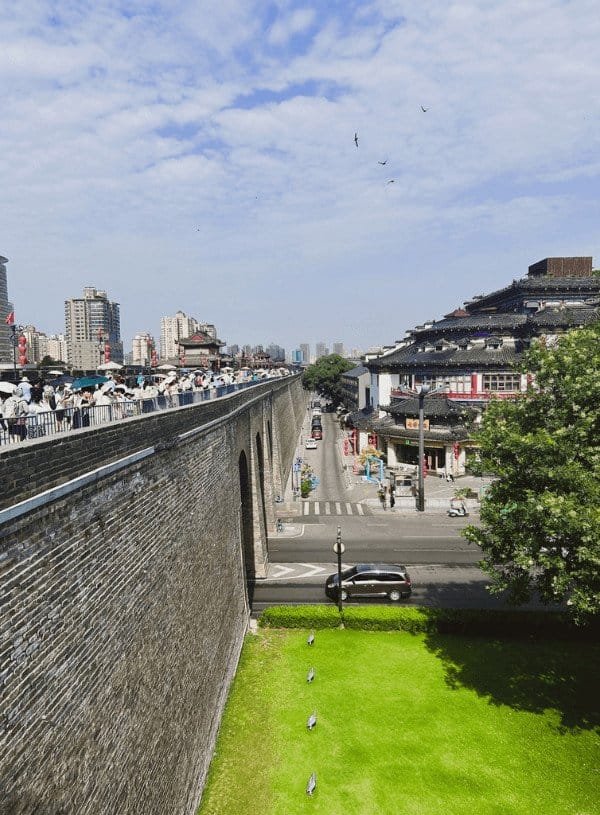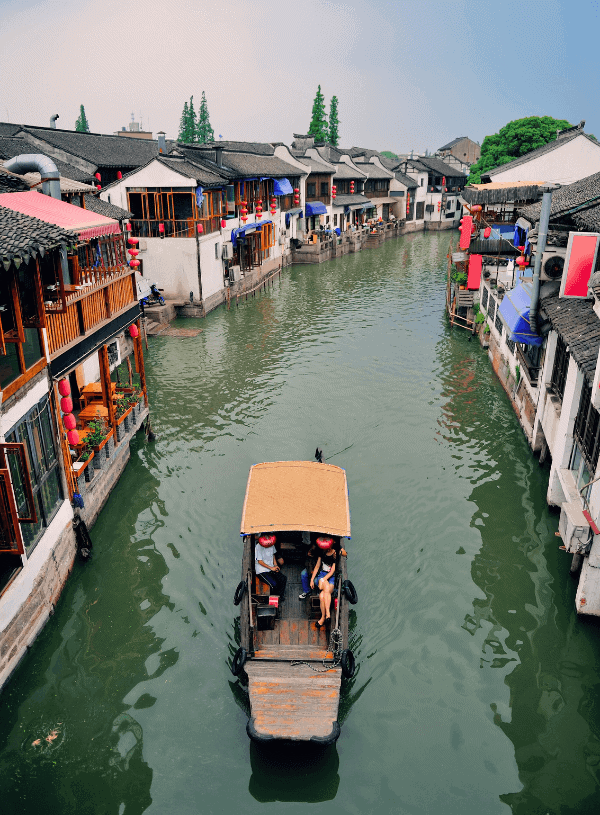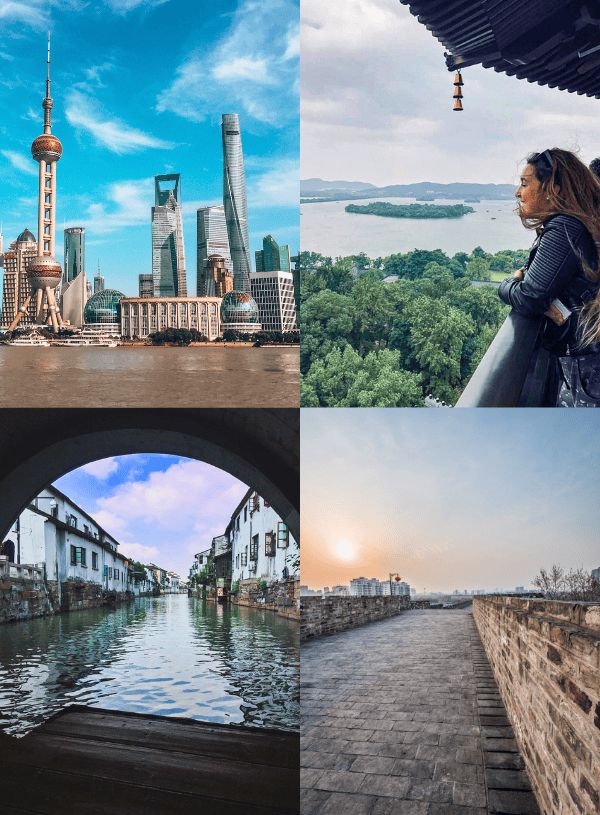Have you just been to the glowing (but yes, chaotic) Shanghai and are now looking for your next stop? Somewhere to slow down and discover a more picturesque, authentic side of China? Good news: Suzhou is just 30 minutes away.
Suzhou is one of the most popular water towns in the country (so no, you won’t have it all to yourself), but for good reason. The beauty and elegance of its UNESCO-protected gardens have inspired generations of Chinese poets, and its timeless alleyways and canals are just as picture-perfect as they look online. So…yes, Suzhou is worth a stop if you’re already in Shanghai.
In this blog post, I’ll guide you through the 11 best things to do in Suzhou, packed into a 3-day itinerary based on my trip. Plus, I’ll share helpful tips to plan your stay: from where to sleep to when to go to avoid the crowds, and more.
This article may contain affiliate links. This means that if you purchase through one of the links, I may be paid a small commission at no extra cost to you.
Don’t have time now?📌 Pin it for later
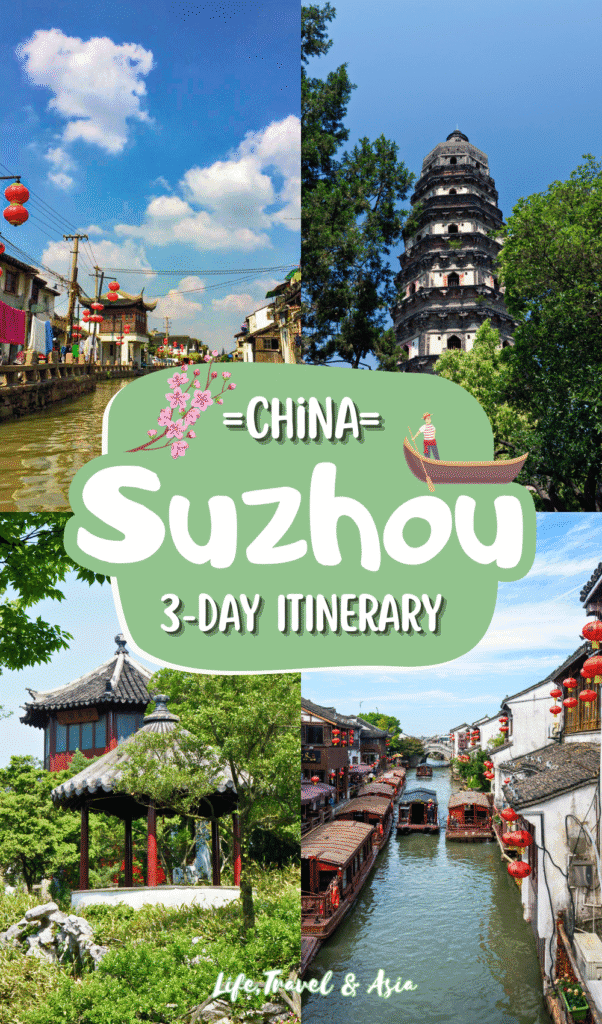
Is Suzhou Worth Visiting?
Suzhou is just a 30-minute train ride from Shanghai, and if you’re already landing there (which you probably are), it would honestly be a shame not to stop by. Suzhou is calm in a way that feels almost weird after the energy of Shanghai (and you will be wondering, “Is it the same country?”).
You’ll find that slow, small-town vibe that makes you want to wander with no destination, just following the flow. Its charm lies in its alleyways and canals. Boats gently slide past stone bridges, locals sit outside their homes chatting or playing cards, and life seems to move at half speed.
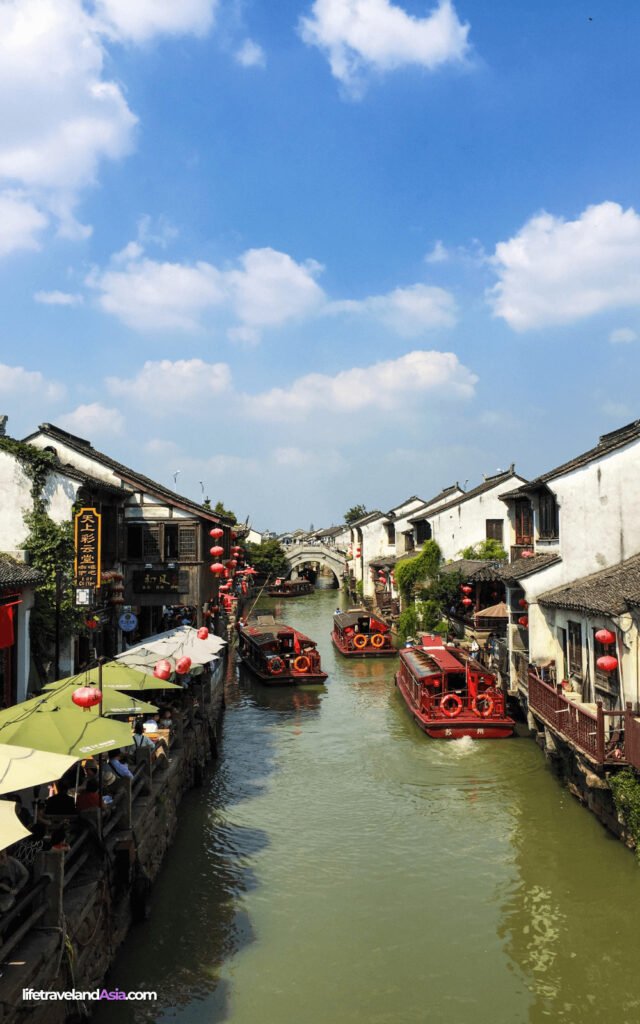
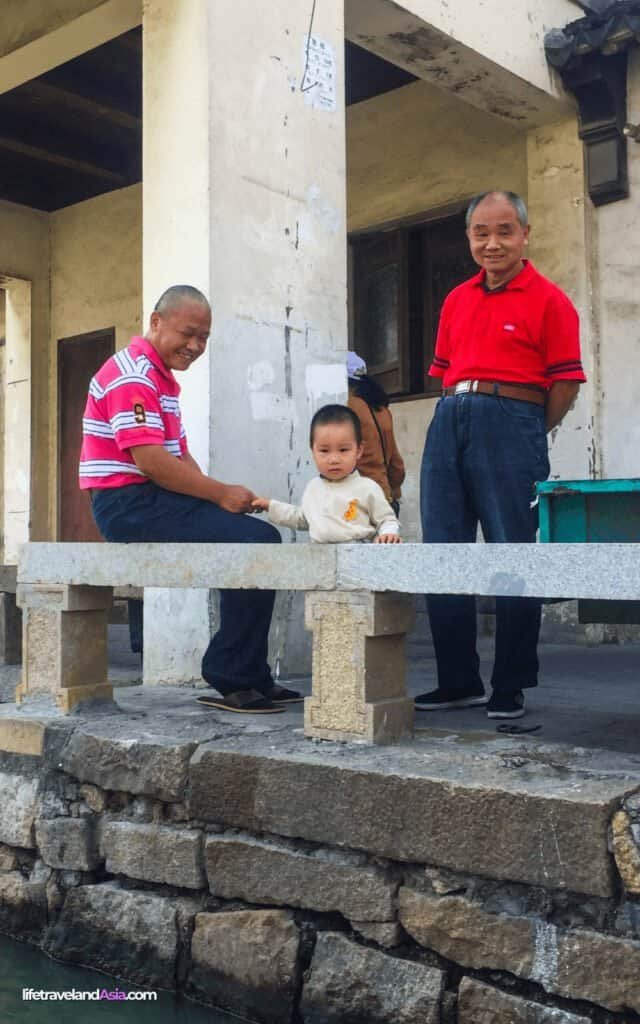
The houses lining the water look like they’ve been there forever. You’ll see grandparents playing with their grandkids along the banks, and ladies going about their daily chores with their doors wide open.
And then, of course, there are the gardens, Suzhou’s pride. These aren’t just pretty green spaces; they’re masterpieces of design, praised for centuries for a reason.
So yes, Suzhou is worth visiting. Just don’t expect a secret spot with zero tourists. But if you time it right (early mornings are the best time to be around), you’ll get to see a softer, quieter side of China that’s worth your time.
Planning Your Trip
1. Key Things to Know
2. Best Time to Visit Suzhou
The best time to visit Suzhou if you want to avoid big crowds and enjoy warm weather is during the shoulder seasons: early spring (March to April) and autumn (October to November). The weather feels just right—warm but not too hot—and there are fewer tourists compared to the busy summer months and national holidays.
If possible, try to visit on weekdays rather than weekends, as weekends tend to attract more locals and tourists. Also, avoid major Chinese holidays, such as Golden Week in early October and Chinese New Year, when everywhere becomes extremely crowded.
By planning your trip during these quieter times, you’ll get to experience Suzhou’s charm without spending half your day in lines or crowded spots. Personally, I’d pick spring: the gardens are bursting with flowers, and the whole town feels fresh and alive.
3. How many Days in Suzhou?
Two days in Suzhou is enough time to see the main sights of the old town and get lost wandering its charming alleys. But if you can spend three days in town, even better. That way, you’ll have time to explore spots like Tiger Hill or the Panmen scenic area without rushing.
If you only have one day in Suzhou, you can still visit a couple of Suzhou’s most famous gardens, stroll around, grab a snack or tea at a local spot, and hop on a boat to explore Suzhou from the canals.
4. How to Get to Suzhou From Shanghai?
Suzhou is just a 30-minute train ride from Shanghai, and you’ll likely land there first. From Shanghai, you can take the high-speed train.
If you’re in Shanghai, the best way to get to Suzhou is by taking the high-speed train. On trip.com, you’ll find multiple rides that you can book early in the morning.
Shanghai Hongqiao Railway Station offers the best train rides to Suzhou. The best train station to arrive at is Suzhou Railway Station, located in the Gusu district, close to Suzhou’s main sights. From Suzhou Railway Station, you can take subway line 4 and get off at Beisita, which is in the heart of the old town, a 20-minute ride.
Alternatively, you can arrive at Suzhou North Railway Station, a bit further north but still convenient. From there, you can take a taxi, and it’s just a 13-minute ride.
5. How to Get Around in Suzhou?
Walking is the best way to get around the old town, especially if you’re only there for a couple of days and want to see as much as possible.
That said, if you’re short on time or some spots feel a bit too far on foot, Suzhou’s got a handy subway system with six lines (1 through 6) that can help you get around faster. Taxis are widely available to reach further away locations.
6. Where to Stay in Suzhou?
I have a rule: if I’m staying in a Chinese city for only a couple of days, it doesn’t make sense to be far from the beating heart of the town, and that’s true for Suzhou. When I was there, I stayed in the Gusu District, where the old town is.
That way, you’re close to all the sights and get that kind of experience where, stepping out of your hotel, you immediately stumble into restaurants, street food stalls, and a lively vibe, without needing to take the subway. Below are some hotel recommendations:
Pace Hotel Suzhou: What makes this hotel stand out is its location: right in the heart of the city. Additionally, the staff are extremely kind and welcoming, and the rooms and overall vibe feel incredibly cozy and comfortable.
Cendre Hotel: Located close to the Lingering Garden (one of my favorites in Suzhou), it’s a little further out but still within the district. The value for money here is unbeatable, and the staff will help you discover the city like no one else.
Suzhou Blue Gate Youth Hostel: If you’re a solo traveler looking for that hostel vibe, this is your best bet. The staff speaks English and can help you navigate the city. The hostel is modern, with both dorms and private rooms, and it’s conveniently located near the main sights in the city center.
If you’re looking for more details on traveling to China, here’s my travel guide. You’ll find everything from visa requirements and the best times to travel to tips on language, etiquette, and so much more.
Suzhou Itinerary
Below is the itinerary I followed during my trip to Suzhou. It’s a mix of gardens (of course!), casual strolls around the alleys and canals, and some historical sights. I’ll also share some extra things to do around Suzhou if you happen to have more than three days.
Tickets & Tours in Suzhou
Day 1: UNESCO-Protected Gardens & Museums
1. Humble Administrator’s Garden
⏰ Visit Time: 2-3 hours
🏷️ Ticket Price: From 70 to 80 ¥. Make sure to bring your Passport to purchase tickets.
Located on the Northwest side of the Gusu District, the Humble Administrator’s Garden is the most impressive in Suzhou, which means that it’s also the most crowded with tourists.
Plan to visit early in the morning on weekdays to avoid peak season and National Holidays. In this way, you will experience the Garden as it’s supposed to be: with calm, silence, and plenty of space to soak in the beauty all around you.
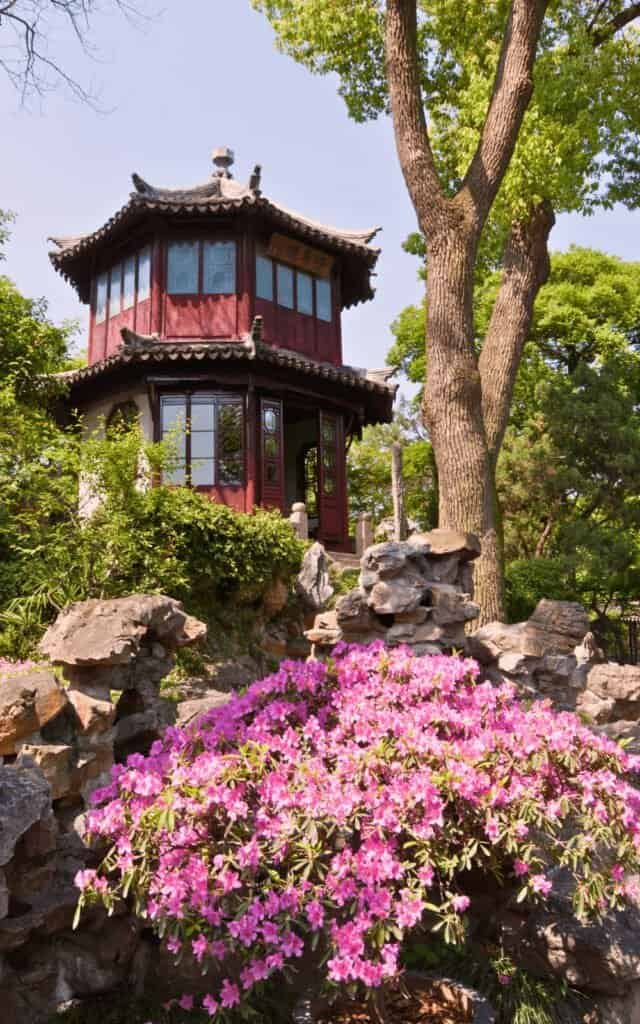
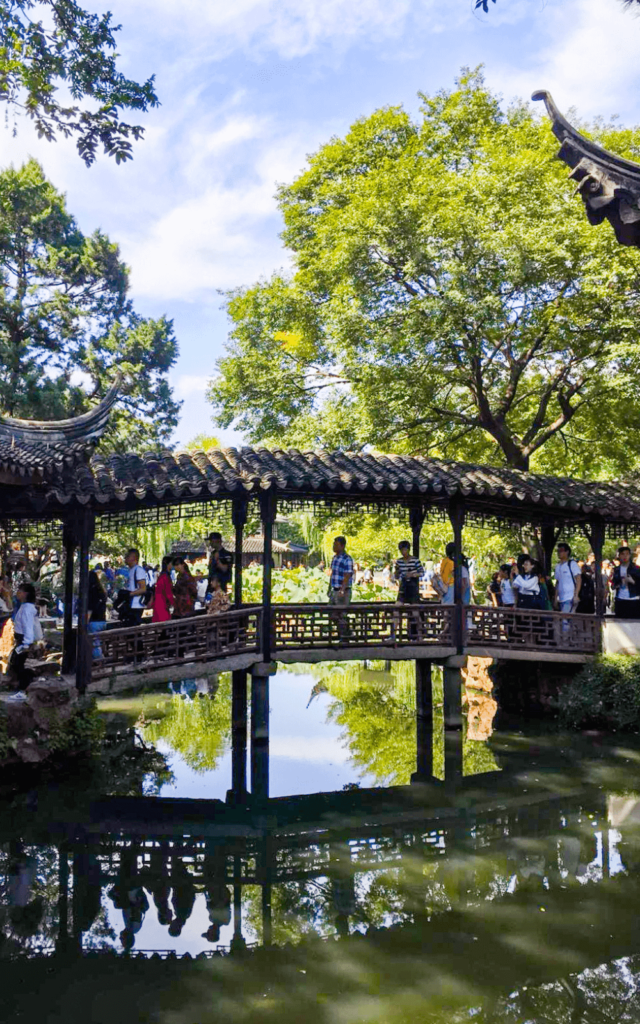
If you’ve never visited a classic Chinese garden, you’ll be touched by how perfectly the nature around you blends with the architectural elements of the garden: pavilions, rockeries, stone bridges, and pathways. It truly feels like you’ve stepped into a painting.
2. Suzhou Museum
⏰ Visit Time: 1-2 hours
🏷️ Ticket Price: Free. Make sure to bring your Passport.
Located right beside the Humble Administrator’s Garden, the Suzhou Museum is a must-see due to its distinctive design and architectural structure.
The exhibition’s display is impressive, featuring around 30,000 pieces that include cultural relics, calligraphy, and paintings. However, the museum’s structure and design are the aspect that draws all the attention.
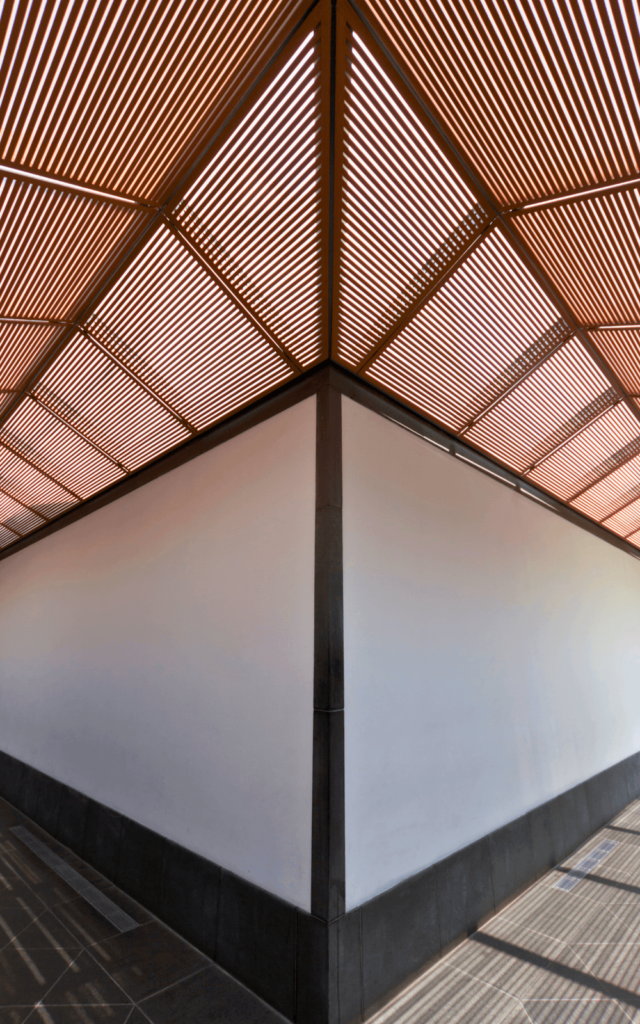
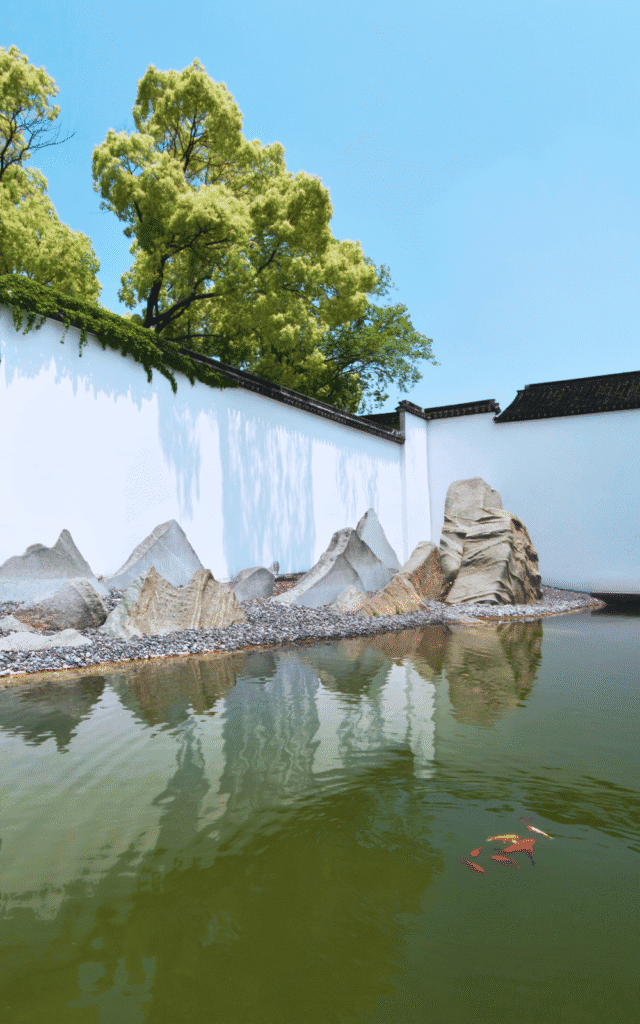
Designed by Chinese-American architect I.M. Pei, the external structure reflects Suzhou’s architectural style, featuring elements such as waterways and courtyards, presented with a modern twist.
The interior highlights how traditional Chinese architectural features, such as sloping roofs, combine with contemporary glass, steel, and granite elements.
3. Couple’s Retreat Garden
⏰ Visit Time: 1-2 hours
🏷️ Ticket Price: ¥45. Tickets can be purchased on-site.
Located near the East leg of the Waicheng River and surrounded by canals, the Couple’s Retreat Garden is less popular than the Humble Administrator’s Garden.
This means you’ll (hopefully) be able to enjoy the still atmosphere without hordes of tourists talking loudly or elbowing for photos next to you.
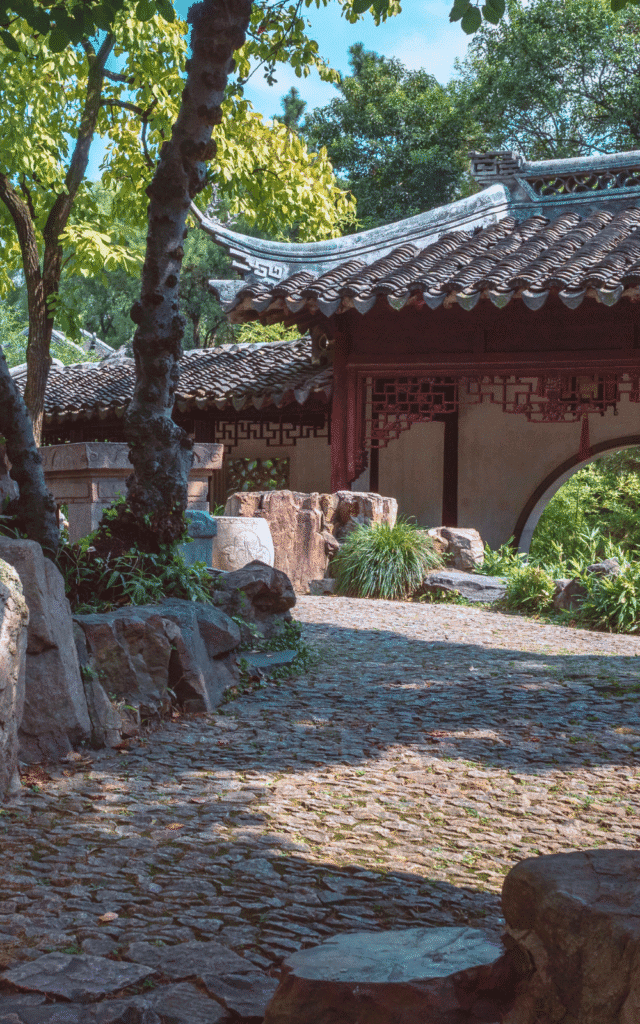
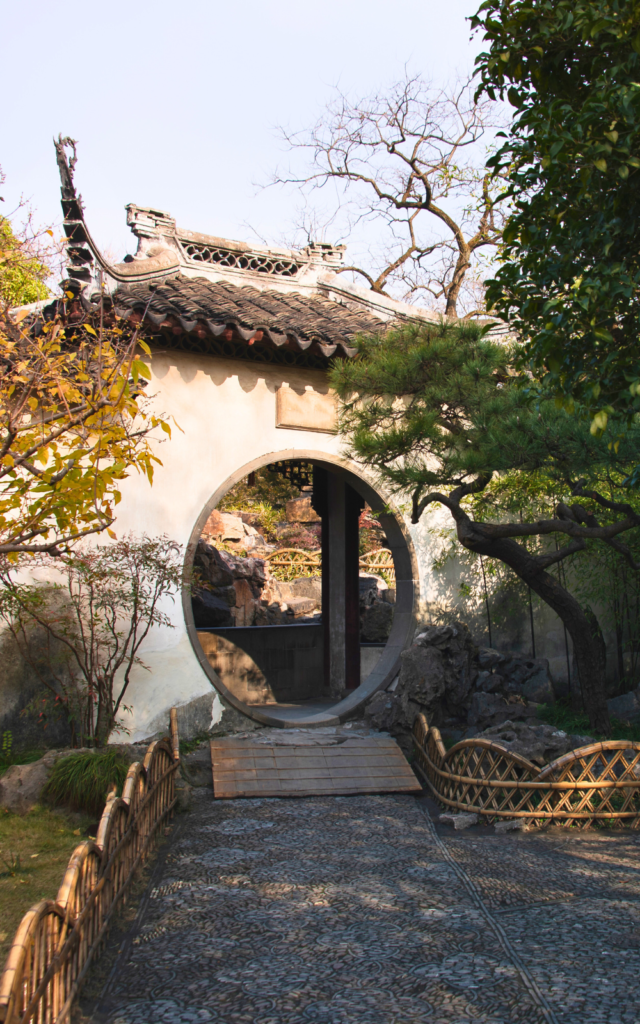
The location and layout of the Garden are truly unique. Everything is in pairs, symbolizing the theme of love and couples (as the name suggests). The Garden is divided into two sections, separated by an elegant open pavilion at the center.
Within the Garden, you’ll find a teahouse, a noodle restaurant, and all the classic Chinese garden architectural features. Compared to the Humble Administrator’s Garden, this is smaller. But its design and peaceful atmosphere make for a beautiful visit.
Day 2: Tiger Hill, Twin Pagodas & Other Gardens
4. Tiger Hill⏰ Visit Time: 3-4 hours
🏷️ Ticket Price: 60-70 ¥, depending on the season. You can purchase tickets in advance here.
Ⓜ️ How to get there: take the subway to Sujin Subway station, then take a bus or a taxi to the foot of the hill. An alternative way is to take the shuttle boat from Shandang Alley (Shandangjie)
Tiger Hill is a natural sight with a deep spiritual vibe. It’s actually where Suzhou’s founder, He Lu, is buried, and there are plenty of legends about mysterious things that might’ve happened here; locals love to talk about them.
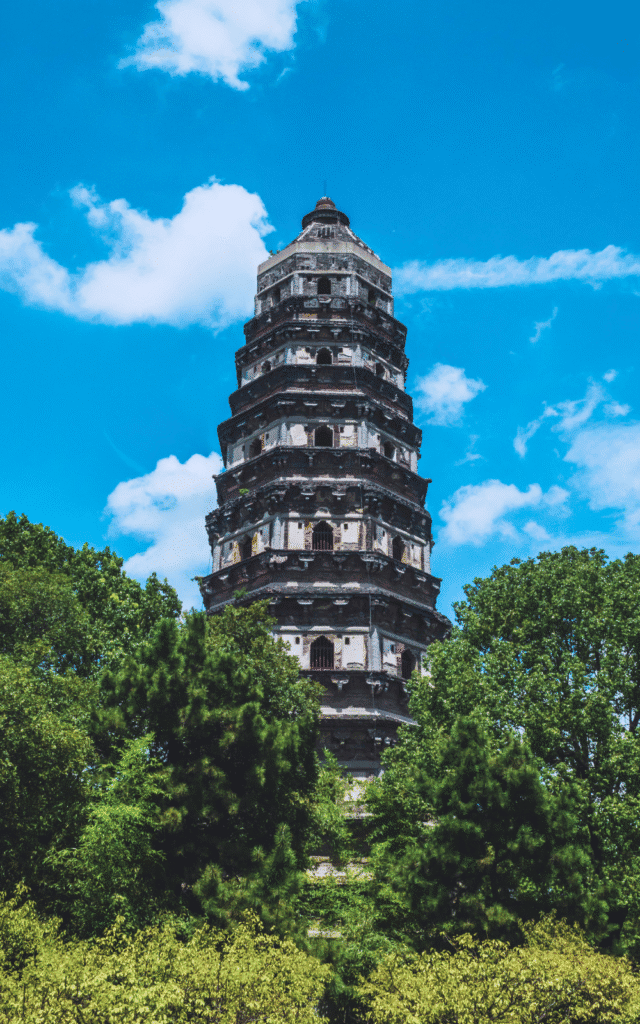
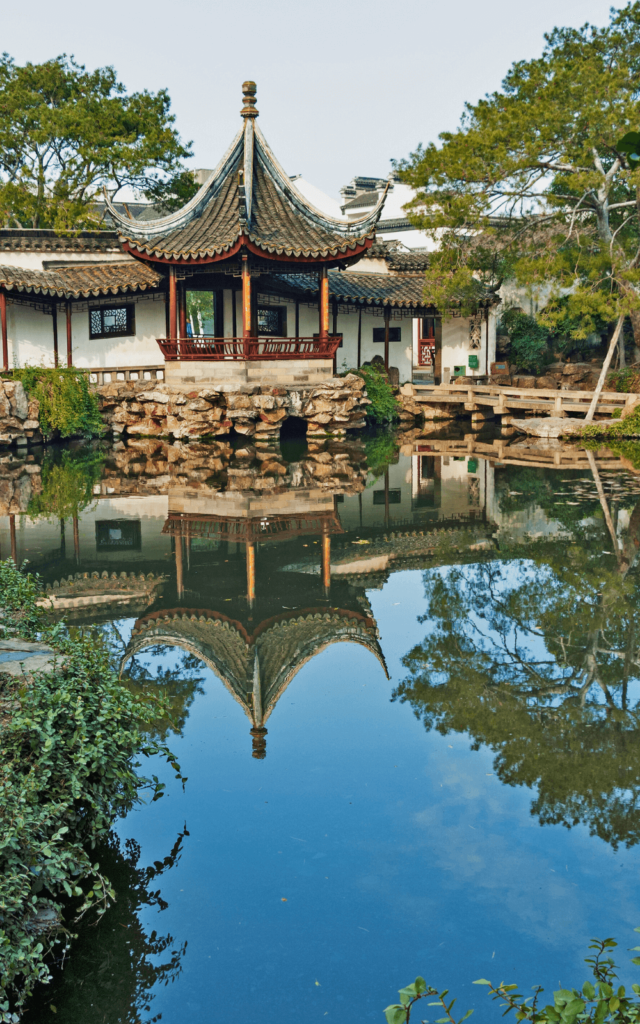
The Cloud Rock Temple Pagoda sits right at the top of the hill. It’s the oldest and tallest pagoda south of the Yangtze River. Because of its slight lean to the north, people call it the “Leaning Tower of Pisa in China”, except it’s older and taller than the Italian one.
But Tiger Hill isn’t just about the pagoda. The whole area is full of little historical relics, like the Beamless Hall from the Yuan Dynasty and the Wanjing Villa, where you’ll find a peaceful bonsai garden that’s just perfect for a quiet walk.
Considering the size of the area and all the stories tied to it, booking a guided tour with a local guide can really make your visit more insightful and meaningful. You can find bilingual private tours here.
5. Luohan Twin Pagodas
🏷️ Ticket Price: ¥10. Tickets can be purchased on-site.
Ⓜ️ How to Get There: The best way to the Twin Pagodas from Tiger Hill is by taxi, which will take around 10 minutes.
From the vast Tiger Hill site, you can head back toward downtown Suzhou to visit the Twin Pagodas in the Luohan Garden.
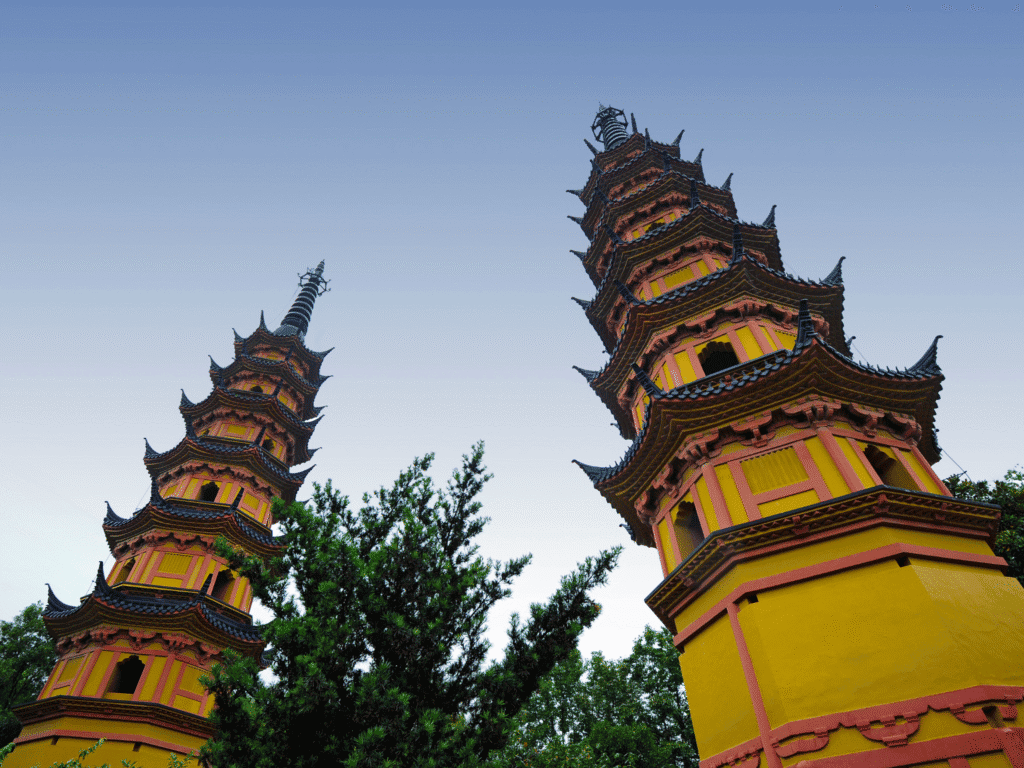
This quiet, tiny garden is home to two nearly identical pagodas—one just slightly shorter than the other—standing around 30 meters tall. It’s rare to find twin pagodas like these in China, especially within what used to be a Buddhist temple site.
Unfortunately, you can’t go inside the pagodas, but you can wander the gardens and snap some photos of these towering structures. In spring, the place is lovely, with pink magnolias adding an extra touch.
6. Master of The Nets Garden
⏰ Visit Time: 1-2 hours
🏷️ Ticket Price: From 30-40¥. You can purchase tickets on site.
Another day, another classic Chinese garden. The Garden of the Master of the Nets is just a 15-minute walk from the Twin Pagodas.
Like the Humble Administrator’s Garden and the Couple’s Retreat Garden, this one is also a UNESCO World Heritage Site—and for good reason.
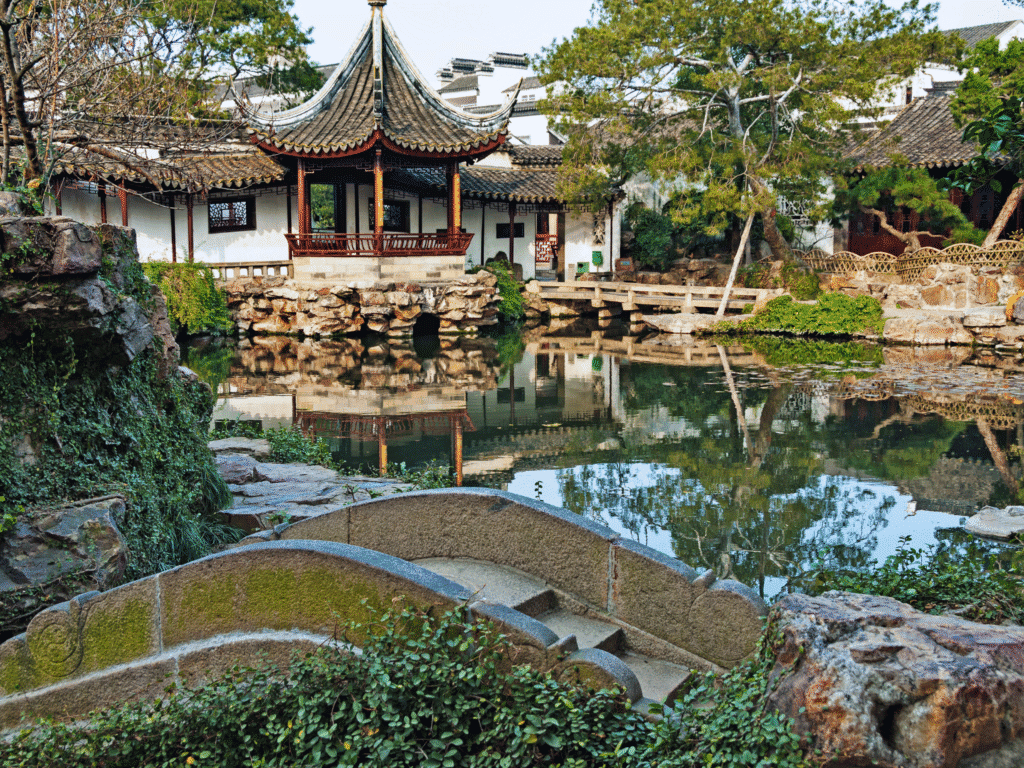
What makes it stand out is its clever use of limited space. It’s only about one-sixth the size of the Humble Administrator’s Garden, yet it somehow feels spacious and full of hidden corners to explore.
Winding paths lead you past koi-filled ponds, stone bridges, and pavilions perfectly placed for taking in views of rocks, trees, and reflections on the water. Even if it’s already your third garden of the trip, every corner of this one will still feel special.
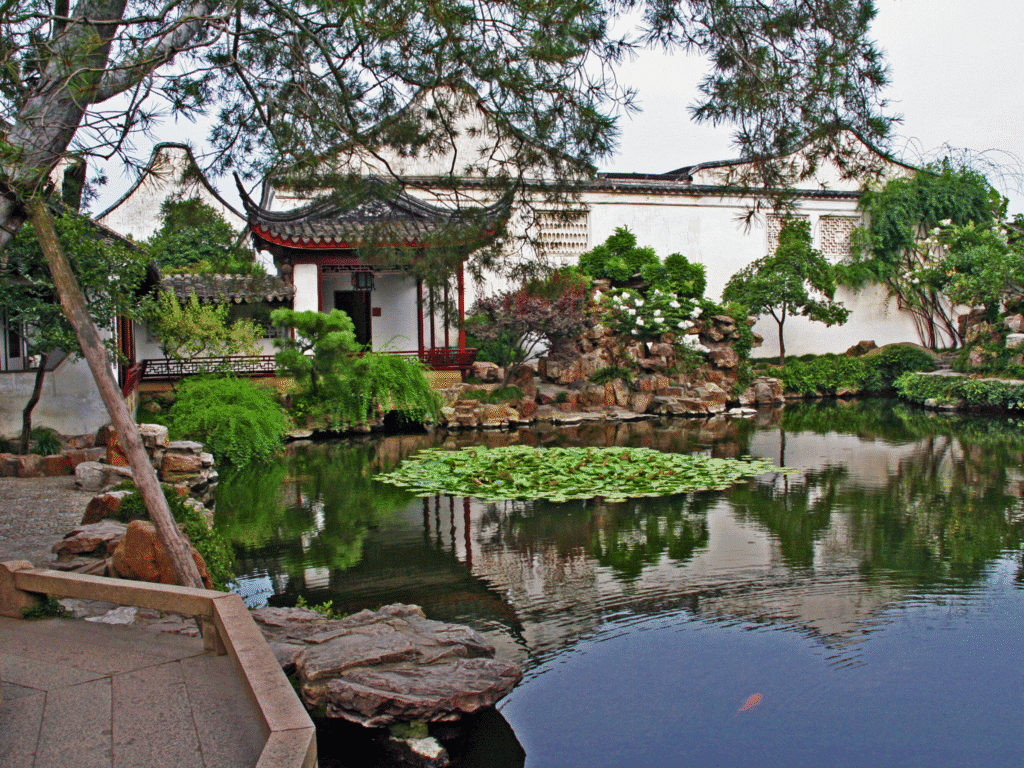
Day 3. Pan Men Scenic Area & Lingering Garden
7. Pan Men Scenic Area
⏰ Visit Time: 1-2 hours
🏷️ Ticket Price: 40 ¥
Ⓜ️ How to Get There: Take subway line 4 to Nanmen subway station.
The Pan Men Scenic Area is a quieter, less-crowded spot on the southwest side of Suzhou. It’s built around the historic Pan Gate, the ancient structure that once controlled access to the city by both land and water. Today, it’s considered the best-preserved gate of its kind in all of China.
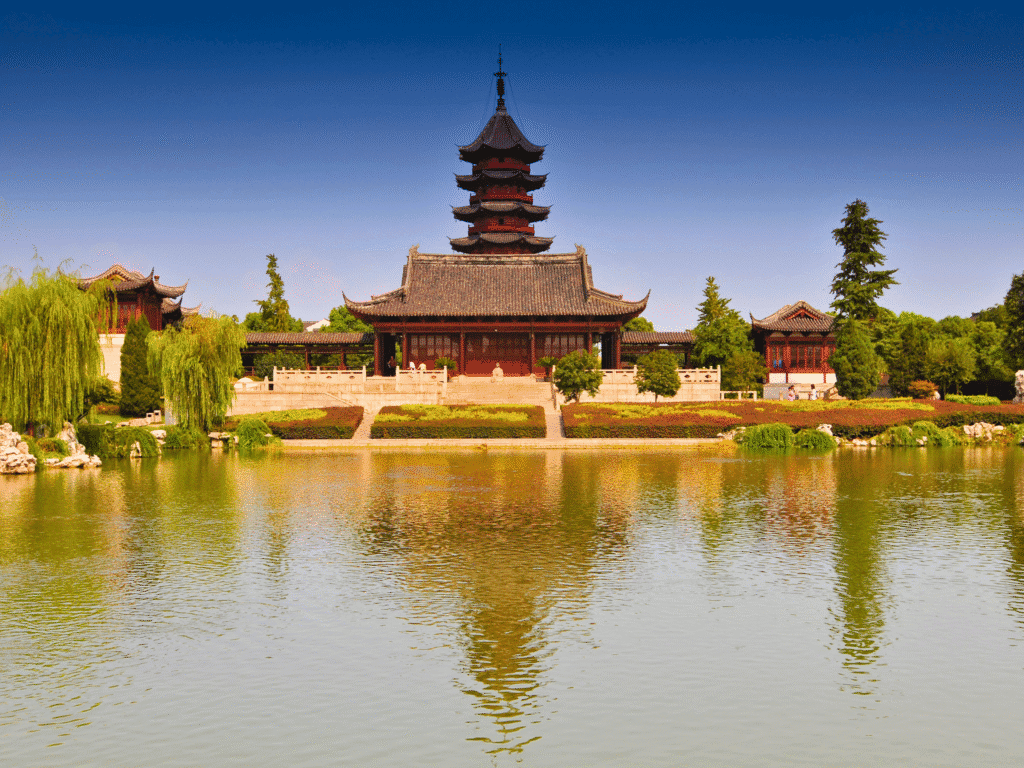
The area feels like a compact display of Suzhou’s architectural charm, almost like it was designed with travelers on a tight schedule in mind.
The site includes the Ruigang Pagoda, a seven-story, 43-meter-tall tower from the Song dynasty (which you can visit with a separate ticket). You’ll also cross the Wu Men Bridge, the tallest stone bridge in Suzhou, also dating back to the Song era.
8. Lingering Garden
⏰ Visit Time: 2-3 hours
🏷️ Ticket Price: 45-55¥ You can purchase tickets on site
Ⓜ️ How to Get There: from Nanmen subway station at the Panmen Scenic Area, take subway line 4 to Suzhou station. From there, take line 2 to Shilu subway station. It’s a 40-minute journey; you can also take a taxi, which will be much faster.
The Lingering Garden is one of China’s Four Famous Classical Gardens, along with the Summer Palace, the Chengde Mountain Resort, and the Humble Administrator’s Garden.
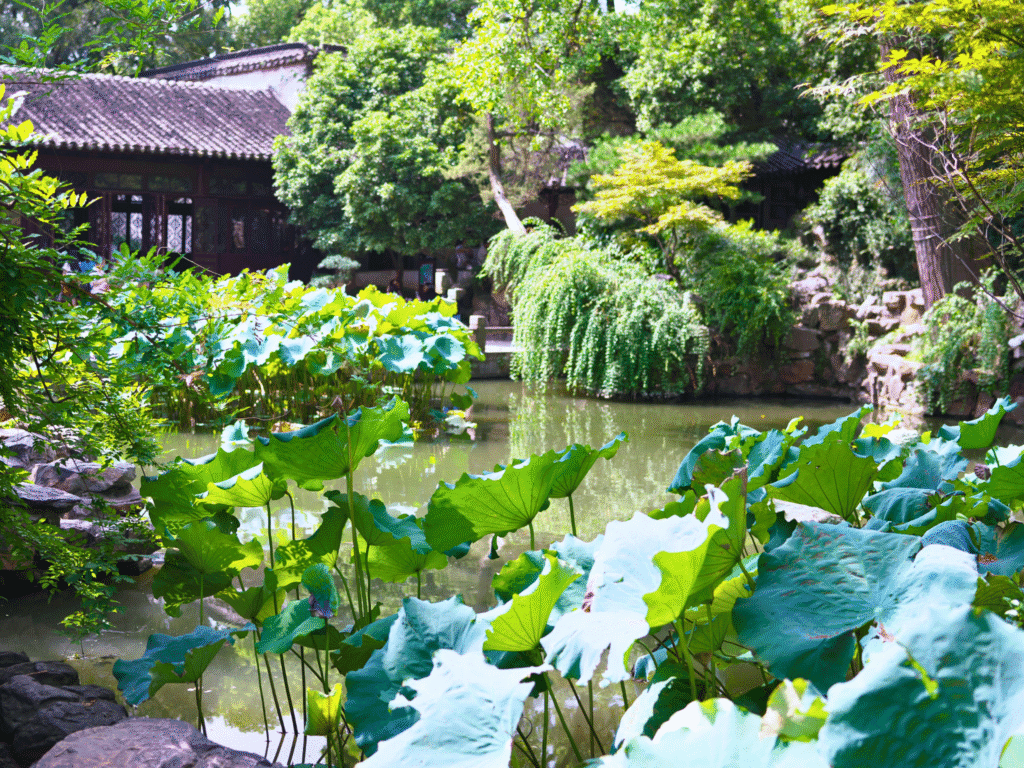
Its charm lies in how every element, though set within a relatively compact space, is perfectly placed to create harmony between architecture and nature. It’s also designed with the human eye in mind.
After stepping through a narrow, dim corridor at the entrance (you might even wonder if you’re in the right place), the space suddenly opens up, and from that moment on, every step and turn reveals a new, picture-perfect view.
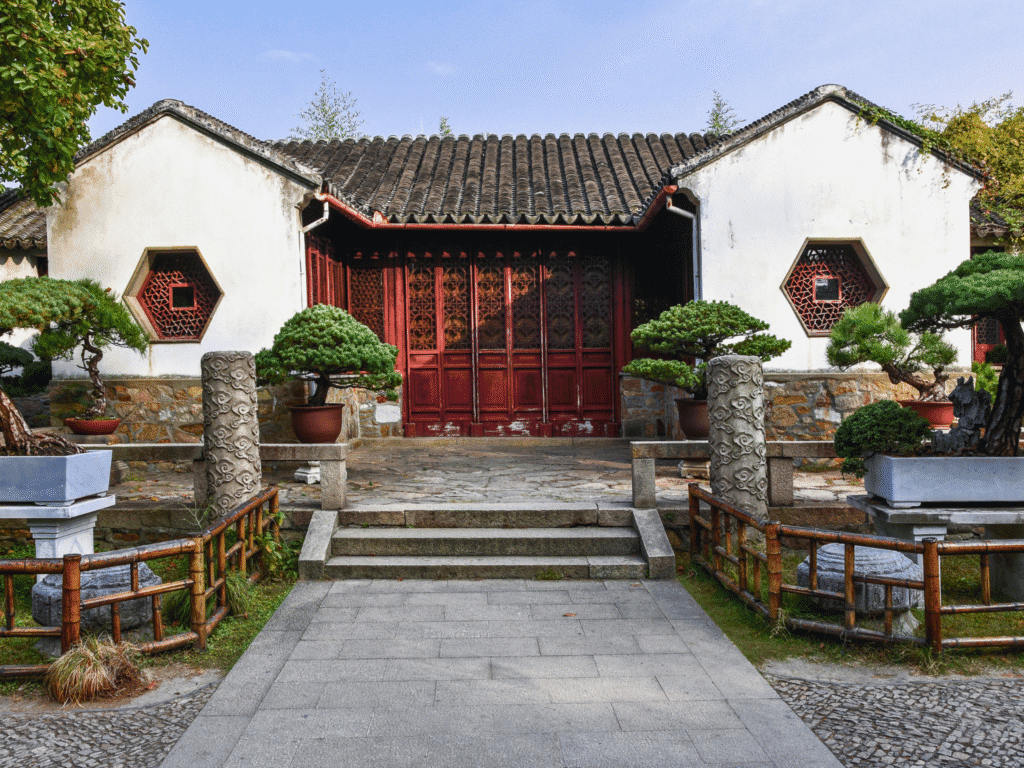
The garden is divided into four main sections, each with its special features. The eastern area is rich in pavilions and hallways, framed by corridors. The central part feels like walking through a Monet painting (water features, rockeries, and cascading flowers). To the west, towering old trees create a play of light and shadow. And up north, you’ll find a bonsai garden.
3 Things to Do in Suzhou At Night
Suzhou offers loads of possibilities to enjoy its lively nightlife. In addition to the more common expats and travelers gathering in pubs and bars, you can decide to enjoy some local experiences.
1. Stroll Around the Lively Night Markets
One thing I love doing in China is aimlessly strolling around old streets lined with shops owned by older people. Here, you can meet locals, buy unique gifts that are not tourist traps, and soak in authentic China’s vibe.
In Suzhou, you can head to Pingjiang Road, all its nearby alleys, and Shangtang Alley, a picturesque canalside street. There’s truly no better feeling than the calm that comes from not being in a rush, browsing every quirky shop, looking around, and trying something new.
2. Visit the Master of The Nets Garden by Night
The Master of Nets Garden is the only one in Suzhou that allows visitors to visit at night. While the ticket is double the price (around 100¥), there’s no better way to experience the garden.
Its lovely architectural and natural features are illuminated at night, providing an entirely new, suggestive experience.
3. Enjoy a Pingtan Exhibition While Sipping Chinese Tea
Pingtan is a type of musical performance that originated in Suzhou during the Song dynasty. It usually involves one male and one female performer who play two traditional Chinese instruments.
As a Suzhou tradition, you can ask your hostel host or hotel staff for the closest and best Teahouse where you can enjoy an actual Pingtan exhibition while sipping Chinese tea.
Where to Go After Suzhou
After Suzhou, two great options to continue your journey are Hangzhou and Nanjing.
Hangzhou is so charming with its peaceful West Lake, tea fields, and poetic landscapes. It’s perfect if you’re craving more nature and beauty.
Nanjing, on the other hand, offers a mix of history and calm city vibes, with impressive landmarks recalling its past as an ancient Chinese capital.
Both are easily reachable by high-speed train and deserve at least a couple of days.
There you go! These are the best things to do in Suzhou based on the 2-day itinerary I followed a couple of years ago.
Suzhou is one of my favorite water towns in China, and I loved wandering around, exploring its shops lining the alleyways. Three days in Suzhou are perfect if you want to explore most of its attractions, but two days or even one are enough to get a feel for its undeniable charm.
Did you find it helpful? 📌 Pinning is caring!
